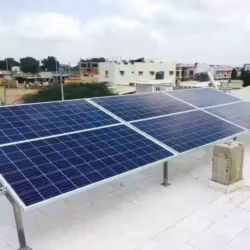Conference rooms are essential spaces for collaboration, presentations, and decision making in businesses of all sizes. The visual clarity of content displayed in these rooms plays a critical role in communication effectiveness. Selecting the right projector screen size ensures that everyone in the room can view slides, charts, and videos clearly without straining their eyes. Making the wrong choice can lead to poor visibility, reduced engagement, and a less professional environment. In this guide, we will explore the key factors to consider when selecting projector screen size for conference rooms, including room dimensions, seating arrangements, projector specifications, and ambient lighting.
Understanding Projector Screen Size
Projector screen size refers to the diagonal measurement of the display surface, usually expressed in inches. The correct screen size depends on several factors, including the distance between the screen and the viewers, the resolution and brightness of the projector, and the room layout. A screen that is too small may make it difficult for attendees to read content, while a screen that is too large can cause distortion and discomfort. Properly sizing the screen ensures that presentations are clear, professional, and engaging.
Room Dimensions
The size and shape of the conference room are fundamental in determining the appropriate projector screen size. Measure the room’s width, length, and height to identify how much wall or ceiling space is available for the screen. Consider the following:
-
Width: The screen should not dominate the wall or block doors, windows, or other fixtures. Leave a margin for aesthetics and proper placement.
-
Height: Ensure that the screen is positioned so the bottom does not interfere with tables or chairs and the top is visible from the farthest seats.
-
Depth: The distance from the projector to the screen, also known as throw distance, is critical for image size and focus. Ensure your projector supports the required throw distance for the chosen screen size.
Viewing Distance
Viewing distance is one of the most important factors when selecting projector screen size. The general guideline is that the optimal viewing distance is 1.5 to 2.5 times the diagonal screen size. For example, a 100 inch screen should be viewed from a distance of approximately 12 to 21 feet.
In conference rooms, the distance from the screen to the farthest seat will largely determine the maximum screen size. Ensure that all participants have a clear line of sight to the screen. Too large a screen can cause neck strain for viewers seated close to the screen, while too small a screen may make it difficult to read detailed content from the back of the room.
Seating Arrangement
The number of participants and their seating layout will influence the ideal screen size. Rows of tables, theater style seating, or U shaped configurations all affect visibility. In long rooms, consider wider screens or dual screen setups to ensure content is legible from all angles. For smaller rooms with fewer attendees, a standard sized screen may suffice.
Projector Specifications
Projector capabilities directly affect how large a screen can be used without sacrificing image quality. Key factors to consider include:
-
Resolution: Higher resolution projectors allow for larger screen sizes without visible pixelation. Full HD or 4K projectors are ideal for detailed presentations.
-
Brightness: Measured in lumens, projector brightness must match the room’s ambient light. Larger screens require higher lumens to maintain clear, vibrant images, especially in rooms with windows or bright lighting.
-
Throw Distance: Ensure that your projector can project the desired screen size from its mounting position. Short throw and ultra short throw projectors allow large images in smaller rooms without placing the projector far from the screen.
Aspect Ratio
Most modern conference content is created in 16:9 aspect ratio, making widescreen displays ideal for professional presentations and videos. However, some older presentation materials may use 4:3, so check the type of content you will display most frequently. Choosing a screen with the correct aspect ratio avoids letterboxing or stretched images, providing a professional viewing experience.
Ambient Light Considerations
Ambient light can significantly impact image clarity. Bright conference rooms with overhead lighting or windows can wash out projector images. Consider using screens with ambient light rejecting (ALR) technology, blackout curtains, or adjustable lighting to enhance visibility. The screen size should complement the projector’s brightness and the room’s lighting conditions to ensure content is easily readable from all seats.
Practical Screen Size Recommendations
-
Small Conference Rooms (up to 12 x 12 feet): A 90 to 100 inch screen is suitable for close seating distances and ensures all participants have a clear view.
-
Medium Conference Rooms (12 x 18 feet): A 100 to 120 inch screen balances visibility and comfort for multiple rows of seating.
-
Large Conference Rooms (18 x 25 feet or larger): Screens 120 inches and above may be required for long rooms or wider seating layouts to ensure clarity from the back of the room.
Installation Considerations
Projector screens can be wall mounted, ceiling mounted, or retractable. Wall mounted screens offer a fixed and permanent solution, while retractable screens provide flexibility for multi purpose rooms. Ensure the screen placement aligns with projector throw distance, viewing angles, and room furniture. Proper installation prevents distortion, glare, and visibility issues.
Budget and Long Term Planning
While screen size is primarily determined by room dimensions and viewing distance, budget considerations play a role. Larger screens or specialized screens such as ALR or motorized models cost more. However, investing in the right screen size ensures that presentations are clear and professional, providing value over time. Consider the total cost of ownership, including projector capability, screen material, installation, and potential maintenance.
Conclusion
Selecting the right projector screen size for conference rooms is essential for creating an effective, professional, and engaging presentation environment. Factors such as room dimensions, seating arrangement, viewing distance, projector specifications, and ambient light all influence the ideal screen size.
By carefully assessing these factors, organizations can choose a screen size that enhances visibility, improves communication, and maximizes the impact of every presentation. Proper planning ensures that your conference room delivers clear, sharp visuals for all participants, making meetings more productive and professional.
Read more: https://topbizlists.com/how-to-choose-the-right-projector-screen-size-for-your-room/


